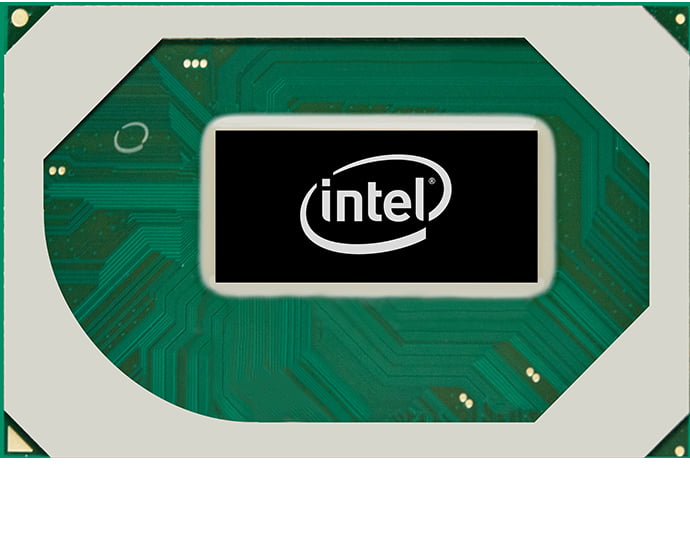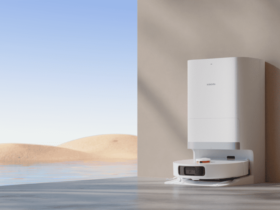Qual è la novità: Oggi Intel ha presentato la più potente generazione di processori Intel® Core™ per PC portatili di sempre: i nuovi Intel® Core™ di nona generazione serie H, progettati per gamer e content creator che desiderano avere un’esperienza ancora superiore.
“La nostra nuova piattaforma di nona generazione è progettata per soddisfare gamer, content creator e utenti più esigenti, offrendo loro più di ciò che vogliono. Stiamo introducendo prestazioni di livello desktop, con frequenze fino a 5 Ghz e 8 core, in una gamma di dispositivi più sottili e un nuovo livello di connettività con Wi-Fi 6 (Gig +), in modo che gli utenti possano giocare o creare ovunque essi vogliano” – Fredrik Hamberger, General Manager dei Premium and Gaming Notebook Segments di Intel
Perché è importante: Attualmente ci sono 580 milioni di gamer su PC e 130 milioni di content creator[i], i quali guardano con attenzione sia alle pure prestazioni che alla reattività dei loro PC. Richiedono computer in grado di gestire tutto ciò che va dagli impegnativi giochi AAA alle operazioni di creazione più onerose come editing, rendering e transcodifica di enormi video 4K – e tutto questo con la possibilità di non dover essere fermi in una determinata postazione. I processori Intel Core di nona generazione offrono funzionalità del calibro di prodotti desktop in un formato mobile, con performance sorprendenti, il wireless più veloce e affidabile con Intel® Wi-Fi 6 AX200 (Gig +), la più versatile connettività via cavo grazie a Thunderbolt™ 3, e supporto per tecnologia di memoria Intel® Optane™.
Che performance offre: Il modello top di gamma è il processore Intel® Core™ i9-9980HK di nona generazione, il primo processore mobile Intel® Core ™ i9 che offre le migliori prestazioni della sua categoria arrivando a una frequenza Turbo massima di 5 GHz[ii] grazie a Intel® Thermal Velocity Boost; 8 core e 16 thread, e il supporto fino a 16 MB di Intel Smart Cache. I processori Intel Core di nona generazione per portatili sono progettati per i carichi di lavoro più impegnativi, in modo da offrire:
- una gamma completa di processori, tra cui Core i5, i7 e, per prestazioni ancora maggiori, il processore Intel Core i9-9980HK sbloccato[iii].
- Fino al 33% di incremento prestazionale rispetto a un PC di 3 anni fa[iv].
- Fino al 28% di reattività in più[v].
- Continua ottimizzazione delle prestazioni grazie a Intel® Dynamic Tuning* per ogni tipo di PC portatile.
Come si gioca: I processori Intel Core di nona generazione per mobile offrono giochi AAA di livello desktop che puoi portare ovunque, e giocare anche mentre è in corso una registrazione e lo streaming. I notebook da gaming risultano notevolmente migliorati, con prestazioni ottimizzate per la batteria e con Intel Wi-Fi 6 AX200 che supporta velocità Wi-Fi multi-Gigabit, lo standard più recente, in grado di offrire bassa latenza e velocità di connessione ultraveloce. I gamer saranno in grado di:
- giocare a videogame AAA immersivi con un miglioramento fino al 56% dei fotogrammi al secondo (FPS) con titoli come “Total War: Warhammer II”[vi].
- ottenere tempi di preparazione del gioco più veloce fino al 38% in giochi come “Civilization 6”[vii].
- giocare, registrare e fare streaming senza compromessi e trasmettere video live in HD fino a 2.1 volte più veloce rispetto alla generazione precedente[viii].
- connettersi con l’ultima tecnologia standard Wi-Fi per gaming attraverso Intel® Wi-Fi 6 AX200 (Gig+), e ottenere la connettività migliore sia per velocità che reattività con un nuovo router Wi-Fi 6 (Gig+) dotato di tecnologia Intel.
Come migliora la creazione di contenuti: I processori Intel Core di nona generazione per mobile offrono maggiore velocità nell’editing di video[ix], per consentire di svolgere, anche quando si è in viaggio, pesanti operazioni per la creazione di contenuti. Inoltre, la nuova Intel® Optane™ memory H10 con storage a stato solido fornisce la reattività della memoria Intel Optane unita alla capienza di un SSD QLC NAND, accelerando il caricamento delle applicazioni e dei contenuti[x], e Thunderbolt™ 3 migliora l’esperienza, sia in casa che in ufficio, tramite un unico cavo veloce che consente di collegare molteplici monitor 4K, storage esterno aggiuntivo e di caricare la batteria. I processori Intel Core di nona generazione per PC portatili offriranno:
- editing di video 4K fino al 54% più veloce[xi].
- con fino a 1 TB di storage totale, la memoria Intel Optane H10 con memoria a stato solido offrirà la capacità necessaria agli utenti per le proprie app e file.
- creazione di contenuti fino al 63% più veloce rispetto a un PC di 3 anni fa, assicurati da Intel® Optane™ memory H10 con storage a stato solido rispetto a un SSD NAND TLC[xii].
- Intel® Wi-Fi 6 (Gig+) consente di condividere 10 GB di file multimediali in meno di 1 minuto (quasi 3 volte più velocemente rispetto allo standard 2×2 AC Wi-Fi)[xiii]. Quando connesso a un nuovo router Wi-Fi 6 (Gig+) dotato di tecnologia Intel, gli utenti possono contare su connettività più veloce che mai per la creazione, la modifica e la condivisione di contenuti.
Dove Trovarli: A partire dal 23 aprile 2019, PC portatili dotati di processori Intel Core di nona generazione saranno introdotti da OEM quali Acer, ASUS, Dell, HP, Lenovo ed MSI, nel momento in cui presenteranno i migliori notebook per gaming e creazione di contenuti.
Nuovi processori anche per PC desktop:
Oggi sono state introdotte anche novità nella famiglia di processori Intel Core di nona generazione per desktop. La nuova linea di processori Intel Core di nona generazione per PC desktop offre attualmente più di 25 prodotti in totale, con opzioni che spaziano dai processori Intel Core i3 fino ai processori Intel Core i9, con prestazioni straordinarie e flessibilità tali da soddisfare una vasta gamma di esigenze dei consumatori: dalla produttività quotidiana al gaming e alla creazione di contenuti. All’interno di questa famiglia di prodotti si aggiungono sul mercato anche processori Pentium Gold e Celeron per il computing di fascia entry level, offrendo ai consumatori ancora più opzioni per trovare il PC desktop perfetto per soddisfare le loro esigenze specifiche e il budget. Le nuove capacità includono:
- fino al 47% di fotogrammi al secondo (FPS) in gaming[xiv].
- Video editing fino a 2,1 volte più veloce rispetto a un PC di 5 anni fa ed esperienze di editing di video a 360 gradi[xv].
- Intel® Wi-Fi 6 (Gig+) con Wi-Fi velocità Gigabit è circa3 volte superiore rispetto allo standard 2×2 AC, e 40% più veloce dell’Intel® Wireless-AC (Gigabit). [xvi]
- Fino a 8 core e 16 thread, fino a 5.0 GHz di frequenza turbo in single-core, 16 MB Intel Smart Cache, e 40 linee PCIe.
Altre Informazioni:
- processori Intel Core di Nona Generazione per mobile:
- processori Intel Core di Nona Generazione per desktop:
Testing concluded April 12, 2019 and may not reflect all publicly available security updates. See configuration disclosure for details. No product can be absolutely secure.
Software and workloads used in performance tests may have been optimized for performance only on Intel microprocessors. Performance tests, such as SYSmark and MobileMark, are measured using specific computer systems, components, software, operations and functions. Any change to any of those factors may cause the results to vary. You should consult other information and performance tests to assist you in fully evaluating your contemplated purchases, including the performance of that product when combined with other products. For more complete information about performance and benchmark results, visit http://www.intel.com/benchmarks
Intel technologies’ features and benefits depend on system configuration and may require enabled hardware, software or service activation. Performance varies depending on system configuration. No computer system can be absolutely secure. Check with your system manufacturer or retailer or learn more at intel.com.
Intel is a sponsor and member of the BenchmarkXPRT Development Community, and was the major developer of the XPRT family of benchmarks. Principled Technologies is the publisher of the XPRT family of benchmarks. You should consult other information and performance tests to assist you in fully evaluating your contemplated purchases.
Warning: Altering PC clock or memory frequency and/or voltage may (i) reduce system stability and use life of the system, memory and processor; (ii) cause the processor and other system components to fail; (iii) cause reductions in system performance; (iv) cause additional heat or other damage; and (v) affect system data integrity. Intel assumes no responsibility that the memory, included if used with altered clock frequencies and/or voltages, will be fit for any particular purpose. Check with memory manufacturer for warranty and additional details.
Intel and the Intel logo are trademarks of Intel Corporation in the United States and other countries.
*Other names and brands may be clamide as the property of others.
[i] Altering clock frequency or voltage may damage or reduce the useful life of the processor and other system components, and may reduce system stability and performance. Product warranties may not apply if the processor is operated beyond its specifications. Check with the manufacturers of system and components for additional details.
[ii] Includes the effect of Intel® Thermal Velocity Boost (Intel® TVB), a feature that opportunistically and automatically increases clock frequency above single-core and multi-core Intel® Turbo Boost Technology frequencies based on how much the processor is operating below its maximum temperature and whether turbo power budget is available. The frequency gain and duration is dependent on the workload, capabilities of the processor and the processor cooling solution.
[iii] Altering clock frequency or voltage may damage or reduce the useful life of the processor and other system components, and may reduce system stability and performance. Product warranties may not apply if the processor is operated beyond its specifications. Check with the manufacturers of system and components for additional details.
[iv] As measured by SYSmark* 2018 comparing 9th Gen Intel® Core™ i7-9750H Processor vs. 6th Gen Intel® Core™ i7-6700HQ Processor
[v] As measured by SYSmark* 2018 Responsiveness Subscore 9th Gen Intel® Core™ i7-9750H Processor with 1TB Intel® Optane™ memory H10 with Solid State Storage drive vs. 6th Gen Intel® Core™ i7-6700HQ Processor with Intel® SSD 760P TLC SSD drive
[vi] As measured by Total War: WARHAMMER II (Skaven Lab Mode) FPS Workload comparing 9th Gen Intel® Core™ i7-9750H vs. 6th Gen Intel® Core™ i7-6700HQ
[vii] As measured by Civilization 6 Turn Time Workload comparing 9th Gen Intel® Core™ i7-9750H Processor vs. 6th Gen Intel® Core™ i7-6700HQ Processor
[viii] As measured by Mega-tasking Gaming Scenario on Black Ops 4 comparing 9th Gen Intel® Core™ i9-9980HK vs. 8th Gen Intel® Core™ i9-8950HK
[ix] As measured by Adobe Premiere Pro Video Editing Workload comparing 9th Gen Intel® Core™ i9-9980HK vs. 6th Gen Intel® Core™ i7-6700HQ Processor
[x] As measured by Media Project Load Workload comparing 9th Gen Intel® Core™ i7-9750H Processor with 1TB Intel® Optane™ memory H10 with Solid State Storage drive vs. 6th Gen Intel® Core™ i7-6700HQ Processor with Intel® SSD 760P TLC SSD drive
[xi] As measured by Adobe Premiere Pro Video Editing Workload comparing 9th Gen Intel® Core™ i9-9980HK vs. 6th Gen Intel® Core™ i7-6700HQ Processor
[xii] As measured by Media Project Load Workload comparing 9th Gen Intel® Core™ i7-9750H Processor with 1TB Intel® Optane™ memory H10 with Solid State Storage drive vs. 6th Gen Intel® Core™ i7-6700HQ Processor with Intel® SSD 760P TLC SSD drive
[xiii] Nearly 3X Faster: 802.11ax 2×2 160 MHz enables 2402 Mbps maximum theoretical data rates, ~3X (2.8X) faster than standard 802.11ac 2×2 80 MHz (867 Mbps) as documented in IEEE 802.11 wireless standard specifications, and require the use of similarly configured 802.11ax wireless network routers.
[xiv] As measured by Media Project Load Workload comparing 9th Gen Intel® Core™ i7-9750H Processor with 1TB Intel® Optane™ memory H10 with Solid State Storage drive vs. 6th Gen Intel® Core™ i7-6700HQ Processor with Intel® SSD 760P TLC SSD drive
[xv] As measured by Media Project Load Workload comparing 9th Gen Intel® Core™ i7-9750H Processor with 1TB Intel® Optane™ memory H10 with Solid State Storage drive vs. 6th Gen Intel® Core™ i7-6700HQ Processor with Intel® SSD 760P TLC SSD drive
[xvi] As measured by Media Project Load Workload comparing 9th Gen Intel® Core™ i7-9750H Processor with 1TB Intel® Optane™ memory H10 with Solid State Storage drive vs. 6th Gen Intel® Core™ i7-6700HQ Processor with Intel® SSD 760P TLC SSD drive





















Lascia un commento